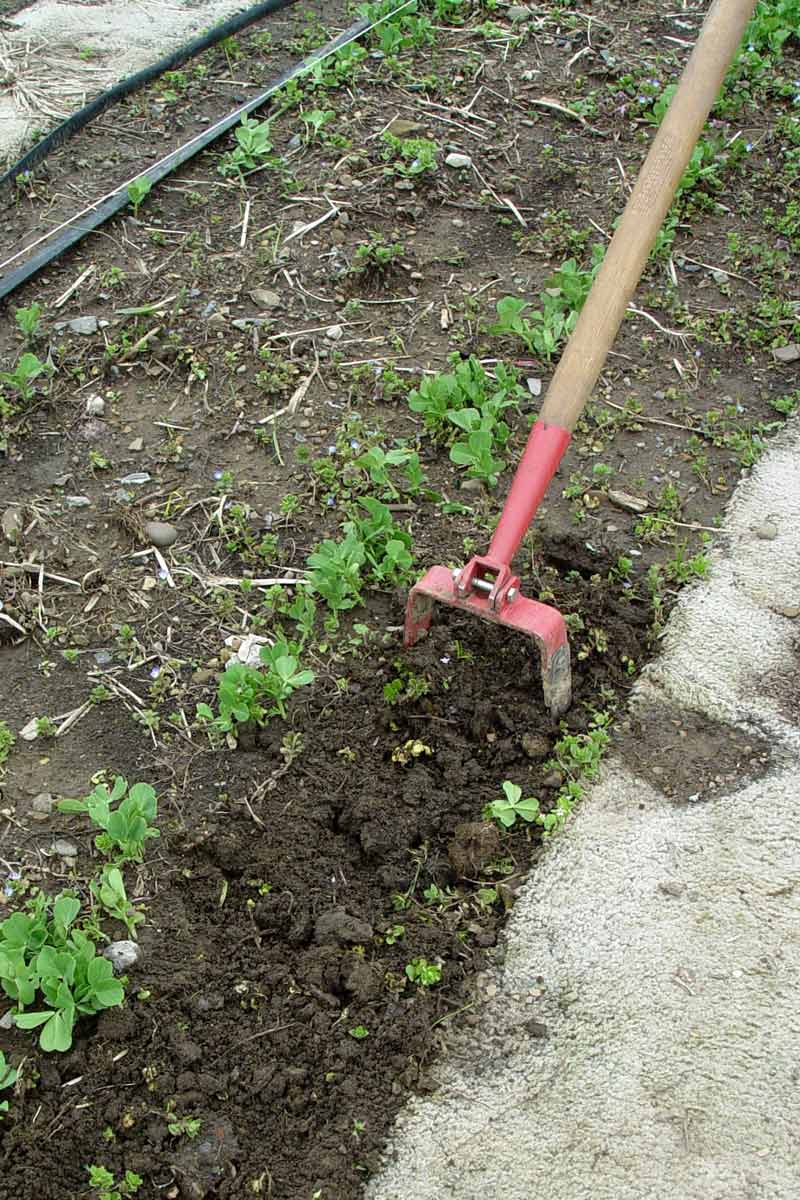8 Must-Have Gardening Tools
Whether you’re new to gardening or a veteran, you’ll get your work done more efficiently if you have the right tool for the job. Read more about 8 must-have tools for gardening.
The fastest way to get rid of a weed in the garden is to get down there and dig it or yank it out of its dirty home, roots and all.
While that’s doable for vigorous twenty- and thirtysomethings, weed-wrestling at ground level becomes a bit more challenging for more "mature" gardeners – or anyone with a bad back.
An alternative is to employ a long-handled tool with a sharp feature capable of dispatching a weed without the gardener having to bend over.
The classic long-handled weeding tool is the hoe, that wide-bladed farmer’s aid that’s been used for centuries, primarily to scrape weeds from between vegetable rows.
More recently, variations have been invented with improved actions and with business ends that slice deeper and narrower so gardeners can be more precise in which plants they cut off.
Here are nine types of long-handled weeding tools you might encounter and how they work:
Flat or “collinear” hoe. A variation on the traditional hoe, this tool lays a blade flat to the ground and puts sharp edges on both the front and back. This lets gardeners cut weeds off at ground level with a mop-like pushing and pulling motion (unlike the pull-only, gouging action of a traditional hoe with its 90-degree angle). Blades come in different widths. $50-$75.
Triangular hoes. A variation of the flat hoe is trading a rectangular blade shape for one that’s shaped like a triangle, diamond, or fighter jet. This design slices through soil easily, is sleek for more precise maneuvering between plants, and cuts on both the push and pull. The Winged Weeder, Corona Clipper Diamond Hoe, and EZ Digger are examples. $30-$80.

Weeding with a stirrup hoe. George Weigel
Stirrup or scuffle hoe. Manufactured in numerous variations by multiple companies, stirrup or scuffle hoes also use horizontal action but with a blade in the shape of a wide U or a heart. Like most flat hoes, these also come in different widths. $25-$50.
Claw-type weeder. Rather than a wide, flat blade, this long-handled weeder has four or more metal claws or stiff tines at the bottom. Gardeners use a rotating and/or raking motion to cultivate the soil and loosen weeds. The Razor-Back Four-Tine Cultivator, Craftsman Four-Tine Long-Handle Cultivator, and Altdorff Manual Twist Tiller Garden Claw are examples. $30-$40.
Wheeled weeders. Sometimes known as “rotary cultivators,” these attach tines to one, two, or even three wheels. The result is a tool that acts like a mini people-powered tiller. The tines loosen the soil and remove/chop weeds as the gardener rolls the tool over the bed. Garden Weasel, Fiskars Telescoping Rotary Cultivar, and Walensee Rotary Cultivar Tool are examples. $35-$45.
Pronged weeder. This type of weeder has prongs at the end that plunge into the soil, then close around the weed and its roots with the use of an attached foot pedal. The weed is removed by rocking back and lifting up. Grampa’s Weeder, Fiskars Stand-Up Weed Puller, Ames Stand-Up Weeder, and Corona WeedSlayer are examples. $30 to $60.

Weeding with a cobrahead tool. George Weigel
CobraHead Long Handle. The design at the end of this wooden long-handled tool features a sturdy, wide-tipped steel hook. This one’s good for both gouging down and under bigger weeds as well as scraping across the top few inches of soil surface to corral multiple weeds in one pass. $70-$75.
Peta Easi-Grip Long Reach Hoe. Designed for gardeners who weed from a seat due to arthritis or other disability, this mid-length, light-weight, stainless-steel hoe with the classic wide blade is designed with a 90-degree, soft-grip handle. There’s also an optional arm support cuff to transfer effort to the forearm.
Flame weeders. These forego blades altogether and use a long-handled propane-fueled torch to blow a weed-burning flame out the bottom. Flame weeders are intended for non-flammable surfaces, such as for killing weeds between paver cracks or those poking up in brick paths. Don’t use them in beds of wood, rubber, or other flammable materials.
Since each design has differing pros and cons, the choice of weeding tools boils down to which job you’re trying to accomplish.
Flat, triangular, stirrup, and wheeled types, for example, are effective at cutting off young weeds, especially annuals, that are growing close to the surface.
Claw and pronged types as well as the CobraHead go deeper and are more effective at removing bigger and perennial weeds with more developed root systems.
Tools with wider blades are more efficient between rows and landscape bushes, while narrower-bladed tools are better when space is tight between plants or in flower beds.
Many gardeners opt for more than one tool to accomplish different jobs.
Also pay attention to comfort and personal usability. Different tools come in different heights (some are adjustable or “telescoping”), handles come in varying widths and shapes, and some tools are lighter in weight than others.
Ideally, pick up and get the feel of a new long-handle weeding tool before buying.
Finally, keep the blades sharp. Blades that dull with use not only don’t work as well but become harder to use.